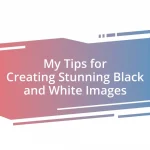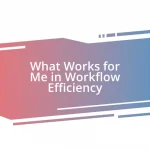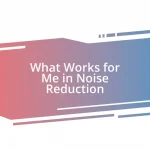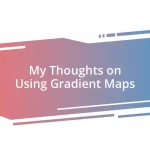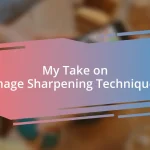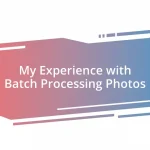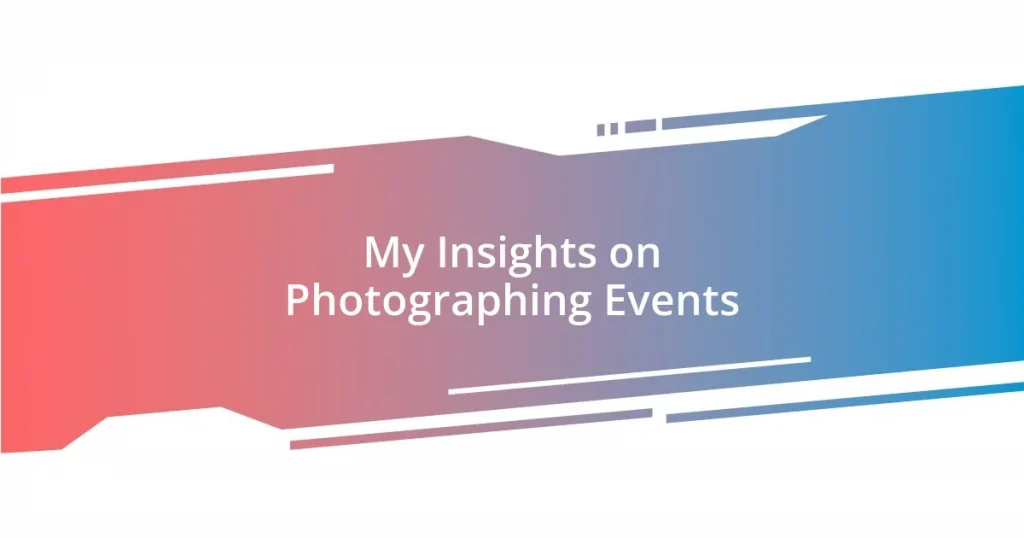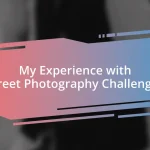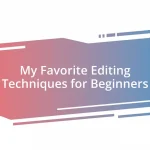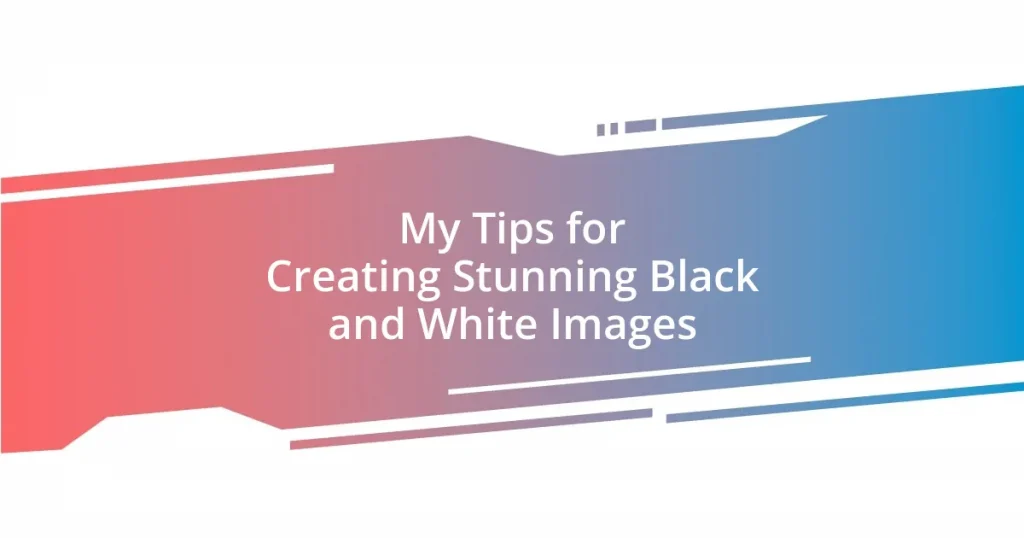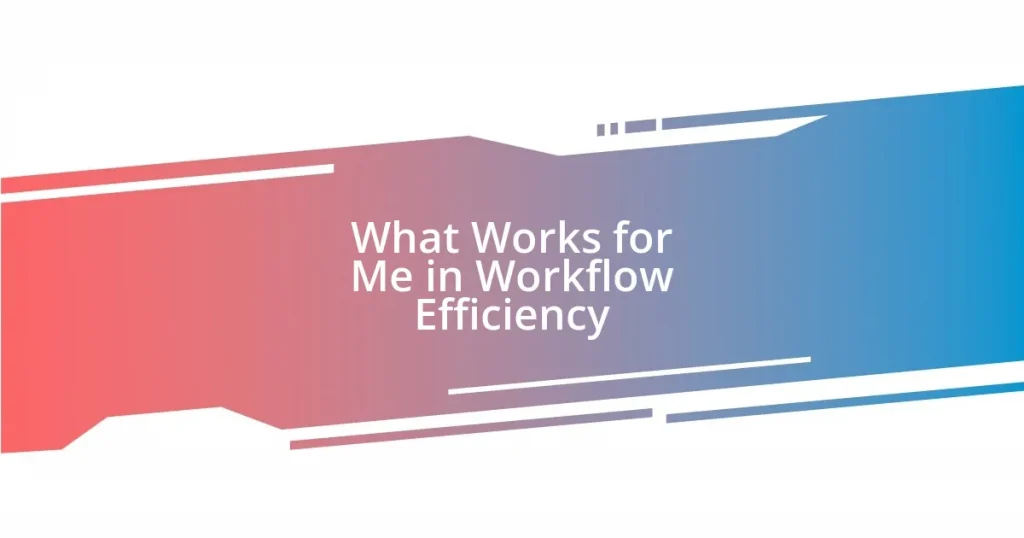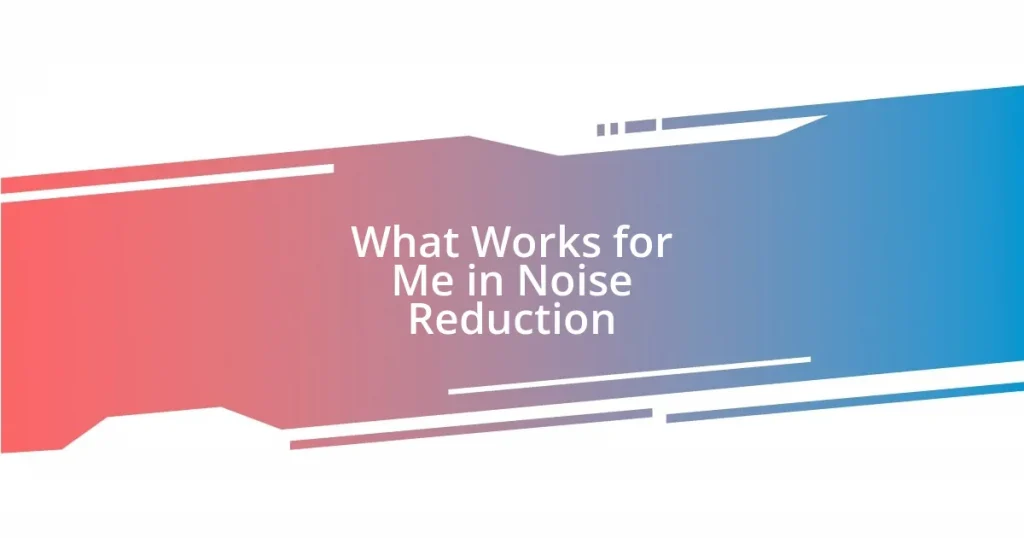Key takeaways:
- Event photography is about storytelling; capturing genuine emotions and significant moments is key.
- Planning is crucial: create shot lists, conduct venue walk-throughs, and maintain communication with organizers.
- Master lighting techniques to enhance image quality, utilizing natural light and external flashes effectively.
- Post-processing improves photos: adjust colors, crop tightly for focus, and apply sharpening techniques for impact.
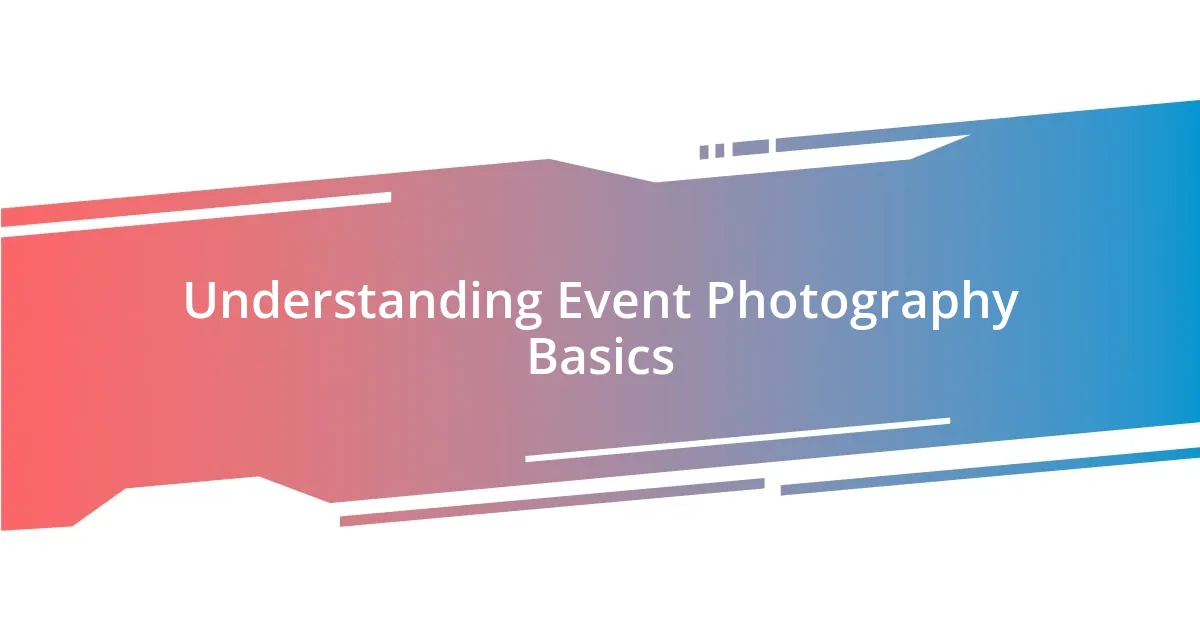
Understanding Event Photography Basics
Event photography is not just about capturing images; it’s about telling a story. I remember shooting a family reunion, where the laughter and emotions filled the air. The key is to anticipate moments; can you feel that sense of urgency when a bride awaits her cue to walk down the aisle? That’s the magic of being in the right place at the right time.
Understanding the basics also means mastering your equipment. I can’t stress this enough: knowing your camera inside out can make a huge difference. When I first started, I missed some incredible shots simply because I wasn’t comfortable navigating my settings quickly. Imagine trying to capture a toast amidst laughter but fumbling with buttons instead—it’s a lesson I learned the hard way.
Moreover, lighting can make or break your shots. I often find myself adjusting to the natural light available, whether it’s the golden hour at an outdoor event or the challenging low light of a cozy venue. Have you ever noticed how a soft, diffused light can create such a warm atmosphere? Understanding these basics helps you transform simple scenes into stunning visuals, full of life and emotion.
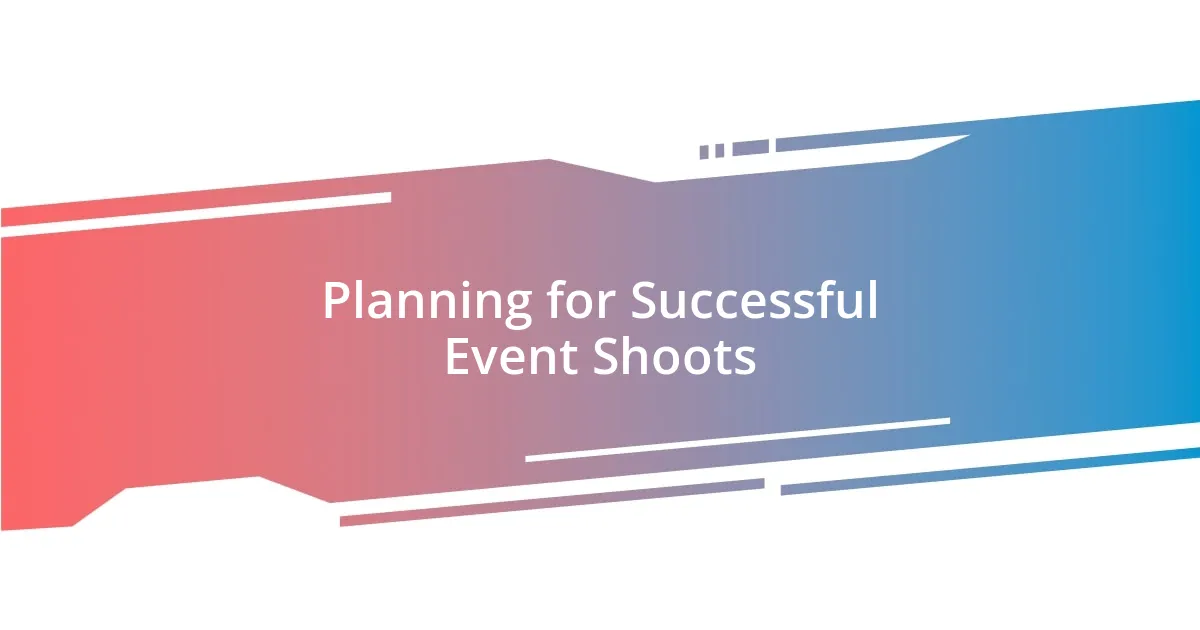
Planning for Successful Event Shoots
Planning for a successful event shoot starts long before the first clicked shutter. From my experience, I find that creating a detailed shot list helps ensure that no significant moment goes uncaptured. I recall shooting a corporate conference where the agenda was packed, and having a list kept me focused amidst the hustle. It acts like a roadmap, guiding you through the event while allowing for spontaneity. How often do we see unexpected, candid moments that become the highlight of our galleries?
Equally important is conducting a venue walk-through ahead of the event. During one wedding, I arrived early to assess possible backdrops, lighting conditions, and different angles. This exploration gave me a clear understanding of where to position myself during key moments. It’s about setting the stage for the storytelling you’re about to create. If I hadn’t taken that extra time, I would have missed a stunning shot of the couple framed by beautiful trees that I discovered during my walk.
Lastly, having a reliable communication plan with event organizers is crucial. In one instance, I learned the hard way when I missed capturing a surprise announcement because I wasn’t informed about it in advance. Now, I make it a point to discuss important moments with the event planner beforehand. This collaboration not only helps me prepare but also builds trust with my clients, ensuring we’re on the same page for a successful shoot.
| Planning Aspect | Importance |
|---|---|
| Shot List | Ensures key moments are not missed |
| Venue Walk-Through | Helps in finding the best angles and lighting |
| Communication with Organizers | Enables awareness of significant surprises or changes |
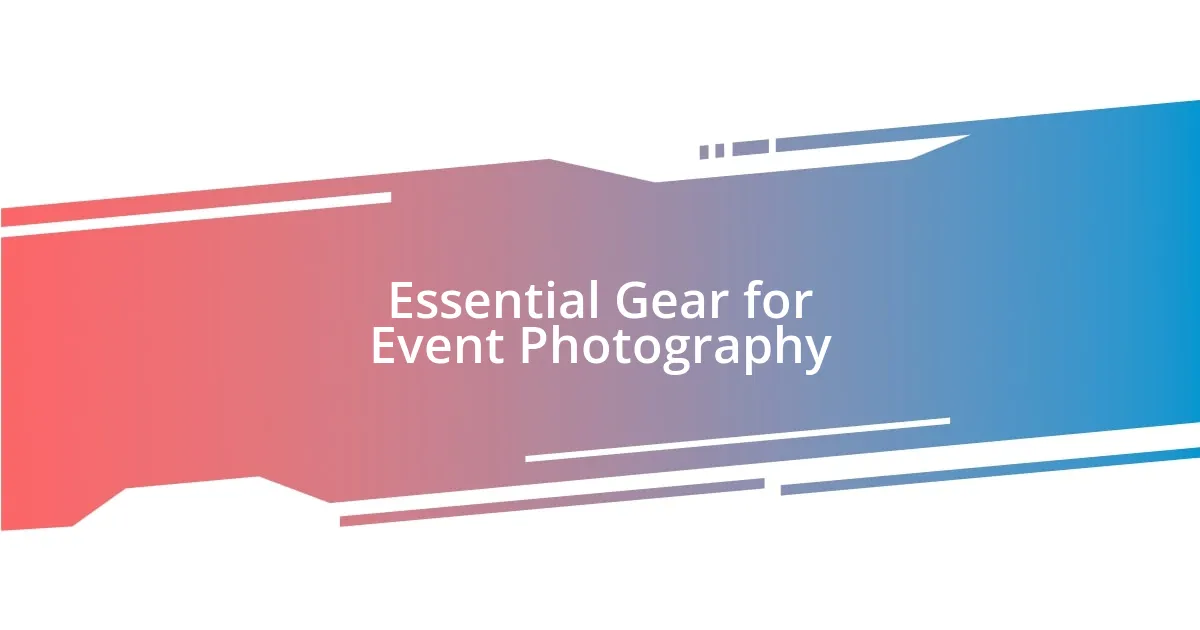
Essential Gear for Event Photography
Essential Gear for Event Photography
When it comes to event photography, having the right gear can significantly enhance your ability to capture stunning images. I remember packing for a gala, and as I placed my camera and lenses into my bag, I felt a surge of excitement. It’s almost like a treasure hunt; the right gear allows you to uncover incredible moments that many might overlook. So, what do I consider essential for a successful event shoot? Here’s my go-to list:
- Camera Body: A reliable camera is a must. I prefer using a full-frame DSLR or mirrorless camera for its versatility, especially in low light.
- Lenses: A fast prime lens (like a 50mm f/1.8) is essential for beautiful portraits, while a zoom lens (like a 24-70mm) offers the flexibility to capture both candids and group shots.
- External Flash: Invest in a good speedlight. I often find it invaluable for bouncing light in dim venues, helping to create soft, flattering illumination.
- Tripod or Monopod: They’re great for stability, especially in low light. I remember one event where my monopod made all the difference, allowing me to rest between bursts of activity.
- Extra Batteries and Memory Cards: Always have backups! There’s nothing worse than your camera dying during a key moment. I’ve learned that the hard way.
Additionally, thinking about your accessories can really elevate your workflow. For instance, I’ve started using a comfortable camera strap, which might seem trivial but can save your neck during long events. I also find a portable reflector is helpful for bouncing natural light and enhancing portraits. The way light can transform a subject is fascinating—especially when I capture those spontaneous smiles that tell a story in their own right. Investing in good gear doesn’t just prepare you for the event; it inspires confidence in your craft and enhances your artistry.
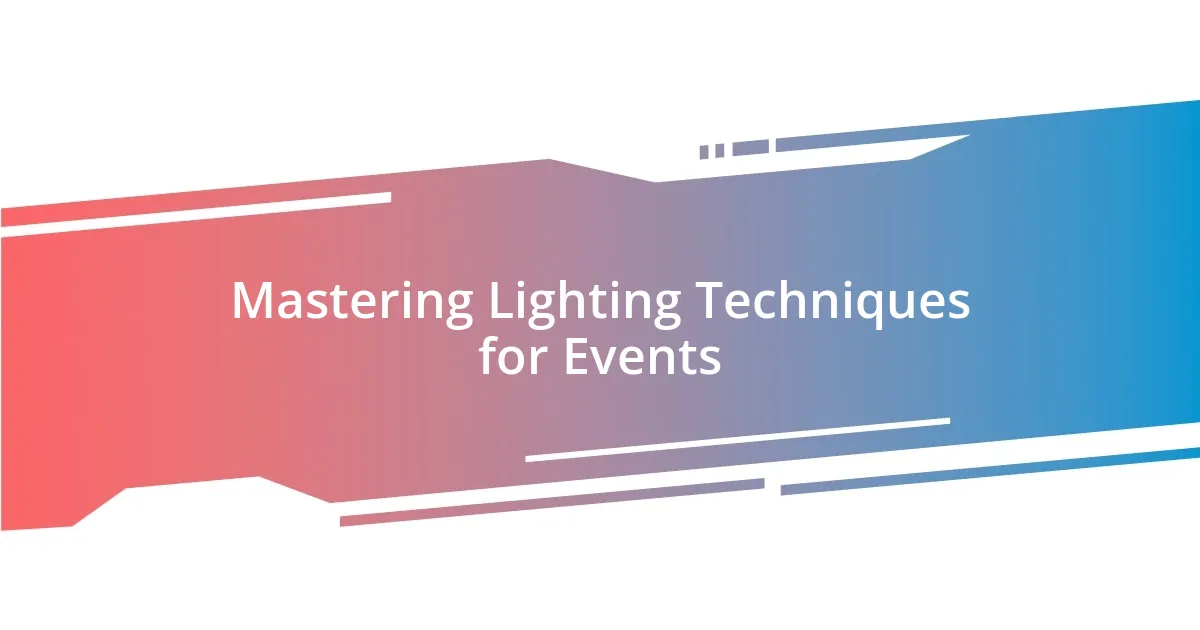
Mastering Lighting Techniques for Events
Mastering lighting techniques is essential in event photography, as lighting can dramatically alter the mood and quality of your images. When I shot a sunset wedding outdoors, I experienced firsthand how the golden hour can work wonders. I positioned myself to catch the natural light streaming through the trees, creating a dreamy, ethereal atmosphere. This not only enhanced the background but also illuminated the couple in a way that made their moments sparkle.
In low-light situations, I often rely on an external flash, but it’s how you use it that matters most. I recall a corporate dinner where the lighting was dim, and people were hesitant to express themselves. Instead of relying solely on direct flash, I bounced the light off the ceiling. The result? A beautiful, soft glow that revealed genuine laughter and connection among attendees. Have you ever wondered how you can capture that spark of interaction? It’s all about understanding your environment and continuously testing your settings.
Don’t underestimate the power of natural light during events. I remember photographing an art exhibit opening. The gallery was filled with bold colors and interesting textures, all beautifully lit by the large windows. By strategically positioning myself, I could use the existing light to highlight the art while also capturing the mingling guests. It was a delightful blend of creativity and spontaneity, proving that sometimes the best lighting is the one you don’t have to manufacture. What’s your preferred method of lighting?
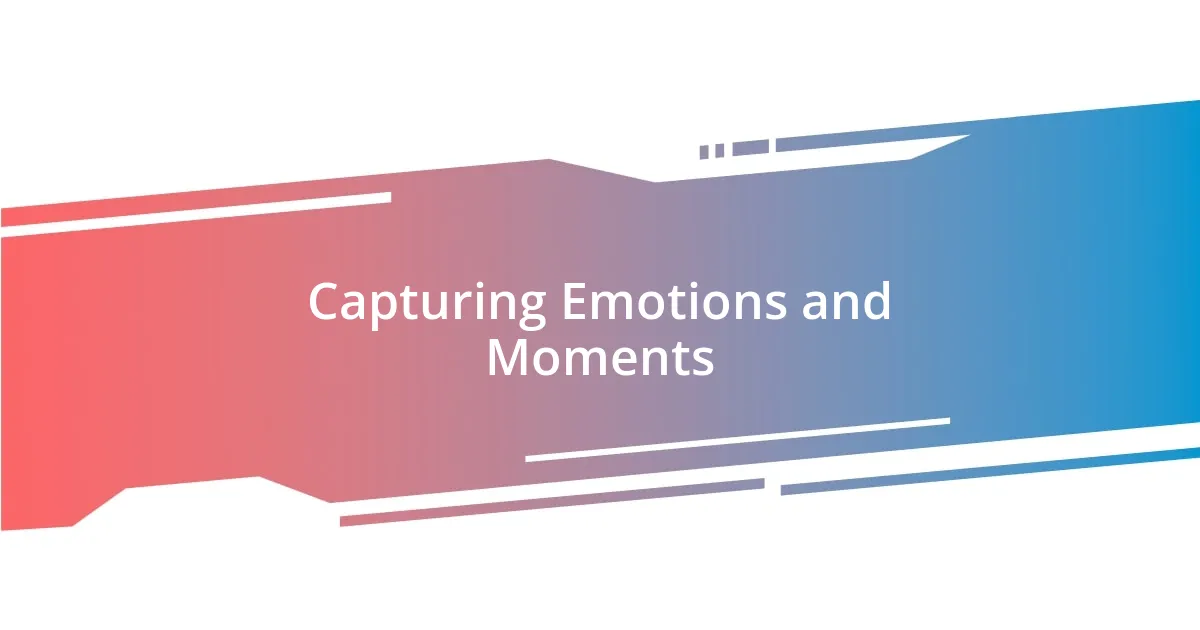
Capturing Emotions and Moments
Capturing emotions and moments in event photography is where the magic truly lies. I remember a vibrant birthday celebration filled with laughter and tears of joy. I positioned myself quietly in a corner, capturing the fleeting smiles and heartfelt embraces without intruding. Those unscripted moments speak volumes more than any posed shot; they’re the essence of the day and reveal genuine connections between people.
There was one wedding where, just as the couple exchanged their vows, a little girl let out a giggle that echoed through the room. It seemed trivial at first, but in that instant, I realized how important it was to seize both the grand gestures and the small, humorous moments. I aimed my camera at the couple, their faces lighting up with affection, and in the same frame, the little girl stole the show. Isn’t it fascinating how a single moment can tell an entire story?
Sometimes, capturing a heartfelt glance or a spontaneous burst of laughter requires patience. I was photographing an anniversary party when I noticed an elderly couple, lost in their own world, sharing a tender moment. Instead of rushing to get the shot, I took a breath and let the moment unfold. Eventually, they shared a soft smile that radiated warmth. I’ll never forget the way their joy intertwined, reminding me that the best pictures often come from simply observing and letting life play out before you. How do you ensure you stay attuned to the emotions around you during events?
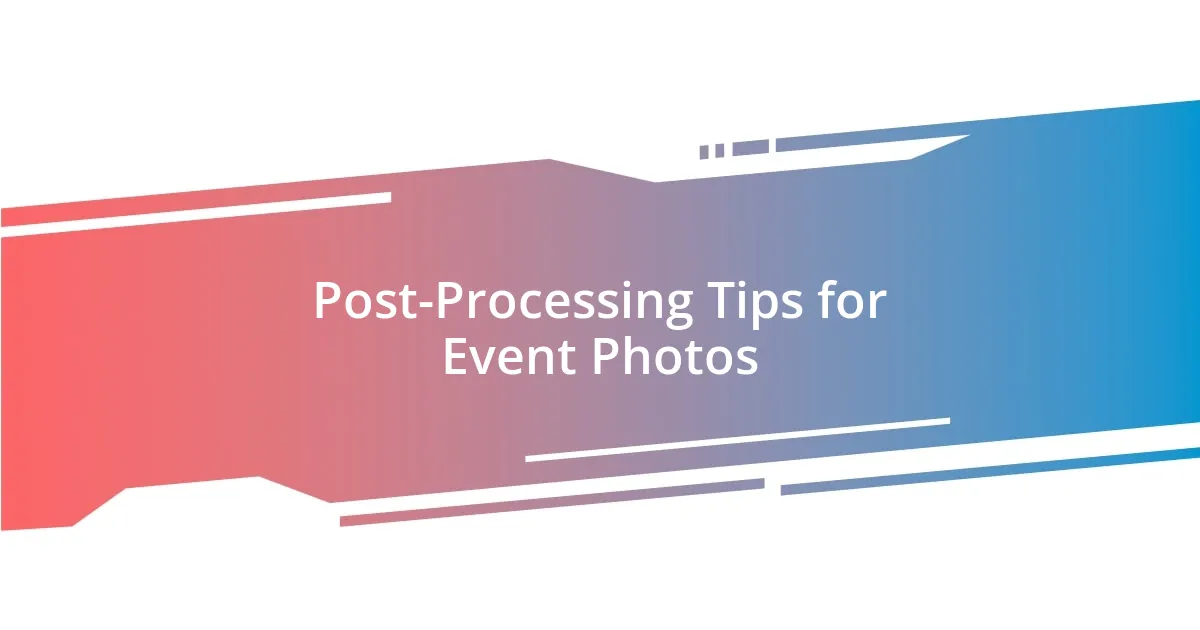
Post-Processing Tips for Event Photos
Post-processing is where event photography really gets to shine. One key tip I’ve embraced is to calibrate colors to reflect the true vibe of the event. There was a charity gala where the decor was an inspiring mix of golds and deep blues. When I edited the images, I adjusted the color balance to highlight those rich hues, making the final images resonate with the opulence of the evening. Have you ever noticed how a little tweak can transform a photo?
Another essential aspect is cropping. I’ve learned that sometimes, less is more. I captured a candid moment at a family reunion, where a grandmother was laughing with her grandchildren. In the original frame, they were positioned against a cluttered background. By cropping in tighter, I was able to focus on their joy, eliminating distractions and amplifying the emotional impact. It’s fascinating how a slight change in framing can enhance a viewer’s connection to the moment.
Lastly, I can’t stress enough the importance of sharpening images during post-processing. After covering a lively concert, I realized that while the atmosphere was vibrant, some shots appeared soft. By applying selective sharpening, I could enhance the excitement in the performers’ movements. It made the difference between a photo that felt flat and one that jumped off the screen! Have you experimented with sharpening techniques to enhance your event photos?
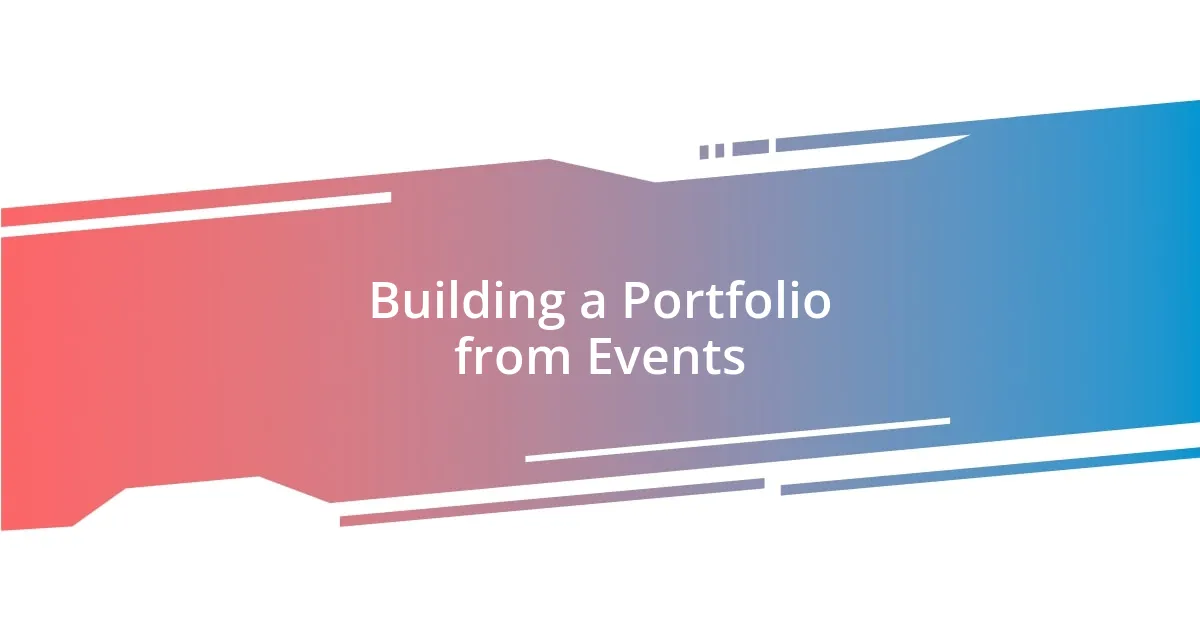
Building a Portfolio from Events
Building a portfolio from event photography is all about variety and connection. I remember attending a local market event, where I purposefully shifted my focus between lively vendors and the interactions among attendees. By capturing the joy in people’s faces as they sampled food or shared laughter with friends, I realized each image could tell a distinct story. Isn’t it incredible how diverse moments can collectively showcase a rich tapestry of experiences?
You’ll find that each event presents an opportunity to showcase your unique style. During a community fundraiser I covered, I experimented with different angles and lighting conditions that played dramatically with the atmosphere. I captured the evening glow filtering through the trees, creating a warm, inviting scene that drew people in. This not only diversified my portfolio but also mirrored the vibrant spirit of the night, inviting viewers to feel as if they were a part of the experience. How often do you think about the ambiance when selecting your shots?
Curating your portfolio means choosing photos that resonate deeply with you. I once selected images from a graduation ceremony, feeling each frame held a narrative of achievement and possibility. As I sifted through the laughter, tears, and warm embraces, I realized that sharing these intimate moments provided a glimpse into lives changed forever. It’s powerful to reflect on how your choices can connect with others—what voice do you want your images to have in your portfolio?
